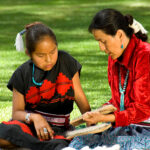Ready or Not? 2017
West Virginia Achieved 6 of 10 Indicators in Report on Health Emergency Preparedness
West Virginia’s Flu Vaccination Rate is 49.6 Percent, 17th Highest
Washington, D.C., December 19, 2017 – In Ready or Not? Protecting the Public’s Health from Diseases, Disasters and Bioterrorism, West Virginia achieved six of 10 key indicators of public health preparedness.
In total, 25 states scored a 5 or lower—Alaska scored lowest at 2 out of 10, and Massachusetts and Rhode Island scored the highest at 9 out of 10.
The report, issued today by the Trust for America’s Health (TFAH), found the country does not invest enough to maintain strong, basic core capabilities for health security readiness and, instead, is in a continued state of inefficiently reacting with federal emergency supplemental funding packages each time a disaster strikes.
According to Ready or Not?, federal funding to support the base level of preparedness has been cut by more than half since 2002, which has eroded advancements and reduced the country’s capabilities.
“While we’ve seen great public health preparedness advances, often at the state and community level, progress is continually stilted, halted and uneven,” said John Auerbach, president and CEO of TFAH. “As a nation, we—year after year—fail to fully support public health and preparedness. If we don’t improve our baseline funding and capabilities, we’ll continue to be caught completely off-guard when hurricanes, wildfires and infectious disease outbreaks hit.”
| No. | Indicator | West Virginia | Number of States Receiving Points |
|---|---|---|---|
| A “Y” means the state received a point for that indicator | |||
| 1 | Public Health Funding Commitment: State increased or maintained funding for public health from FY 2015 to FY 2016 and FY 2016 to FY 2017. | N/A | 19 + D.C. |
| 2 | National Health Security Preparedness Index: State increased their overall preparedness scores based on the National Health Security Preparedness Index™ between 2015 and 2016. | Y | 33 |
| 3 | Public Health Accreditation: The state public health department is accredited. | N/A | 30 + D.C. |
| 4 | Antibiotic Stewardship Program for Hospitals: State has 70 percent or more of hospitals reporting meeting Antibiotic Stewardship Program core elements in 2016. | Y | 20 + D.C. |
| 5 | Flu Vaccination Rate: State vaccinated at least half of their population (ages 6 months and older) for the seasonal flu from Fall 2016 to Spring 2017.* | Y | 20 |
| 6 | Enhanced Nurse Licensure Compact (eNLC): State participates in an eNLC. | Y | 26 |
| 7 | United States Climate Alliance: State has joined the U.S. Climate Alliance to reduce greenhouse gas emissions consistent with the goals of the Paris Agreement. | N/A | 14 |
| 8 | Public Health Laboratories: State laboratory provided biosafety training and/or provided information about biosafety training courses (July 1, 2016 to June 30, 2017). | Y | 47 + D.C. |
| 9 | Public Health Laboratories: State laboratory has a Biosafety Professional (July 1, 2016 to June 30, 2017). | Y | 47 + D.C. |
| 10 | Paid Sick Leave: State has paid sick leave law. | N/A | 8 + D.C. |
| Total | 6 | ||
Ready or Not? features six expert commentaries from public health officials who share perspectives on and experiences from the historic hurricanes, wildfires and other events of 2017, including from California, Florida, Louisiana and Texas.
The report also examines the nation’s ability to respond to public health emergencies, tracks progress and vulnerabilities, and includes a review of state and federal public health preparedness policies. Some key findings include:
- Just 19 states and Washington, D.C. increased or maintained funding for public health from Fiscal Year (FY) 2015-2016 to FY 2016-2017.
- The primary source for state and local preparedness for health emergencies has been cut by about one-third (from $940 million in FY 2002 to $667 million in FY 2017) and hospital emergency preparedness funds have been cut in half ($514 million in FY 2003 to $254 million in FY 2017).
- In 20 states and Washington, D.C. 70 percent or more of hospitals reported meeting Antibiotic Stewardship Program core elements in 2016.
- Just 20 states vaccinated at least half of their population (ages 6 months and older) for the seasonal flu from Fall 2016 to Spring 2017—and no state was above 56 percent.
- 47 state labs and Washington, D.C. provided biosafety training and/or provided information about biosafety training courses (July 1, 2016 to June 30, 2017).
The Ready or Not? report provides a series of recommendations that address many of the major gaps in emergency health preparedness, including:
- Communities should maintain a key set of foundational capabilities and focus on performance outcomes in exchange for increased flexibility and reduced bureaucracy.
- Ensuring stable, sufficient health emergency preparedness funding to maintain a standing set of core capabilities so they are ready when needed. In addition, a complementary Public Health Emergency Fund is needed to provide immediate surge funding for specific action for major emerging threats.
- Strengthening and maintaining consistent support for global health security as an effective strategy for preventing and controlling health crises. Germs know no borders.
- Innovating and modernizing infrastructure needs – including a more focused investment strategy to support science and technology upgrades that leverage recent breakthroughs and hold the promise of transforming the nation’s ability to promptly detect and contain disease outbreaks and respond to other health emergencies.
- Recruiting and training a next generation public health workforce with expert scientific abilities to harness and use technological advances along with critical thinking and management skills to serve as Chief Health Strategist for a community.
- Reconsidering health system preparedness for new threats and mass outbreaks. Develop stronger coalitions and partnerships among providers, hospitals and healthcare facilities, insurance providers, pharmaceutical and health equipment businesses, emergency management and public health agencies.
- Preventing the negative health consequences of climate change and weather-related threats. It is essential to build the capacity to anticipate, plan for and respond to climate-related events.
- Prioritizing efforts to address one of the most serious threats to human health by expanding efforts to stop superbugs and antibiotic resistance.
- Improving rates of vaccinations for children and adults – which are one of the most effective public health tools against many infectious diseases.
- Supporting a culture of resilience so all communities are better prepared to cope with and recover from emergencies, particularly focusing on those who are most vulnerable. Sometimes the aftermath of an emergency situation may be more harmful than the initial event. This must also include support for local organizations and small businesses to prepare for and to respond to emergencies.
The report was supported by a grant from the Robert Wood Johnson Foundation (RWJF) and is available on TFAH’s website at www.healthyamericans.org.
Score Summary:
A full list of all of the indicators and scores and the full report are available on TFAH’s website. For the state-by-state scoring, states received one point for achieving an indicator or zero points if they did not achieve the indicator. Zero is the lowest possible overall score, 10 is the highest. The data for the indicators are from publicly available sources or were provided from public officials.
- 9 out of 10: Massachusetts and Rhode Island
- 8 out of 10: Delaware, North Carolina and Virginia
- 7 out of 10: Arizona, Colorado, Connecticut, Hawaii, Minnesota, New York, Oregon and Washington
- 6 out of 10: California, District of Columbia, Florida, Illinois, Maryland, Nebraska, New Jersey, North Dakota, South Carolina, South Dakota, Utah, Vermont and West Virginia
- 5 out of 10: Georgia, Idaho, Maine, Mississippi, Montana and Tennessee
- 4 out of 10: Alabama, Arkansas, Iowa, Louisiana, Missouri, New Hampshire, Oklahoma and Pennsylvania
- 3 out of 10: Indiana, Kansas, Kentucky, Michigan, Nevada, New Mexico, Ohio, Texas, Wisconsin and Wyoming
- 2 out of 10: Alaska
Trust for America’s Health is a non-profit, non-partisan organization dedicated to saving lives by protecting the health of every community and working to make disease prevention a national priority. www.healthyamericans.org

